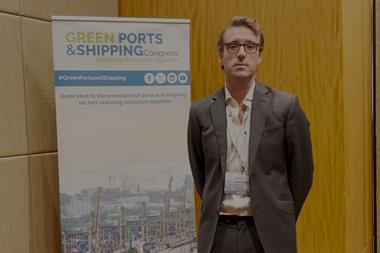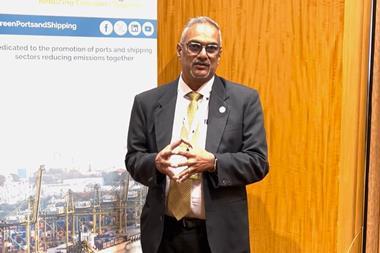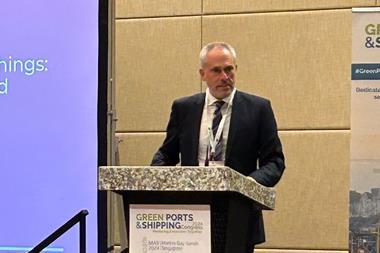Some good news on the pace on maritime decarbonization has to be sobered by the scale of the transition needed to bring new fuels and technologies into wide use globally, panelists told the Green Ports & Shipping Congress on 9 May.

The caution came after two days of calls for coordination, sharing and common purpose – but was tempered by the trillions of dollars of investment needed and the urgency on introducing new ships and technologies.
“Our prediction is by 2035, even half of the new vessels will not be new fuels,” said Peter Bos, who leads professional maritime solutions for renewable energies at Royal HaskoningDHV.
Bos added that there is a lot of positive news on alternative fuels, but we need to move from MoUs (memorandums of understanding) to actual deals and plans.
He described ‘chicken and egg’ obstacles to new shipping fuels such as a lack of experience in regulations, training for workers, and making a good business case among factors that make it hard to move quickly.
That brought up a two-speed response in the industry with some first movers out of the gates, but other companies watching from the sidelines and feeling some heat to act.
“Many companies in shipping, maritime, are now being ‘pushed’ on meeting decarbonization goals after the first movers,” said Taylor Wamberg, regional maritime commercial markets manager at Lloyd’s Register, who added that there is a need to create a demand signal for new fuels, looking at number of ships, and tracking them.
Still, the number of players involved in the transition is a challenge.
“The complex set of stakeholders makes coordination on maritime transition difficult,” said Archana Kannan, senior manager, Green Shipping Corridors at C40 Cities and Strategy Consultant at Advisory, ARUP.
She also warned to be mindful of anti-competition laws when considering data and intellectual property sharing.
But one easier win for the maritime industry would be showing the benefits of the transition in concrete ways.
“Improvements at port facilities the lead to better public health can gather local support for bigger changes.”








